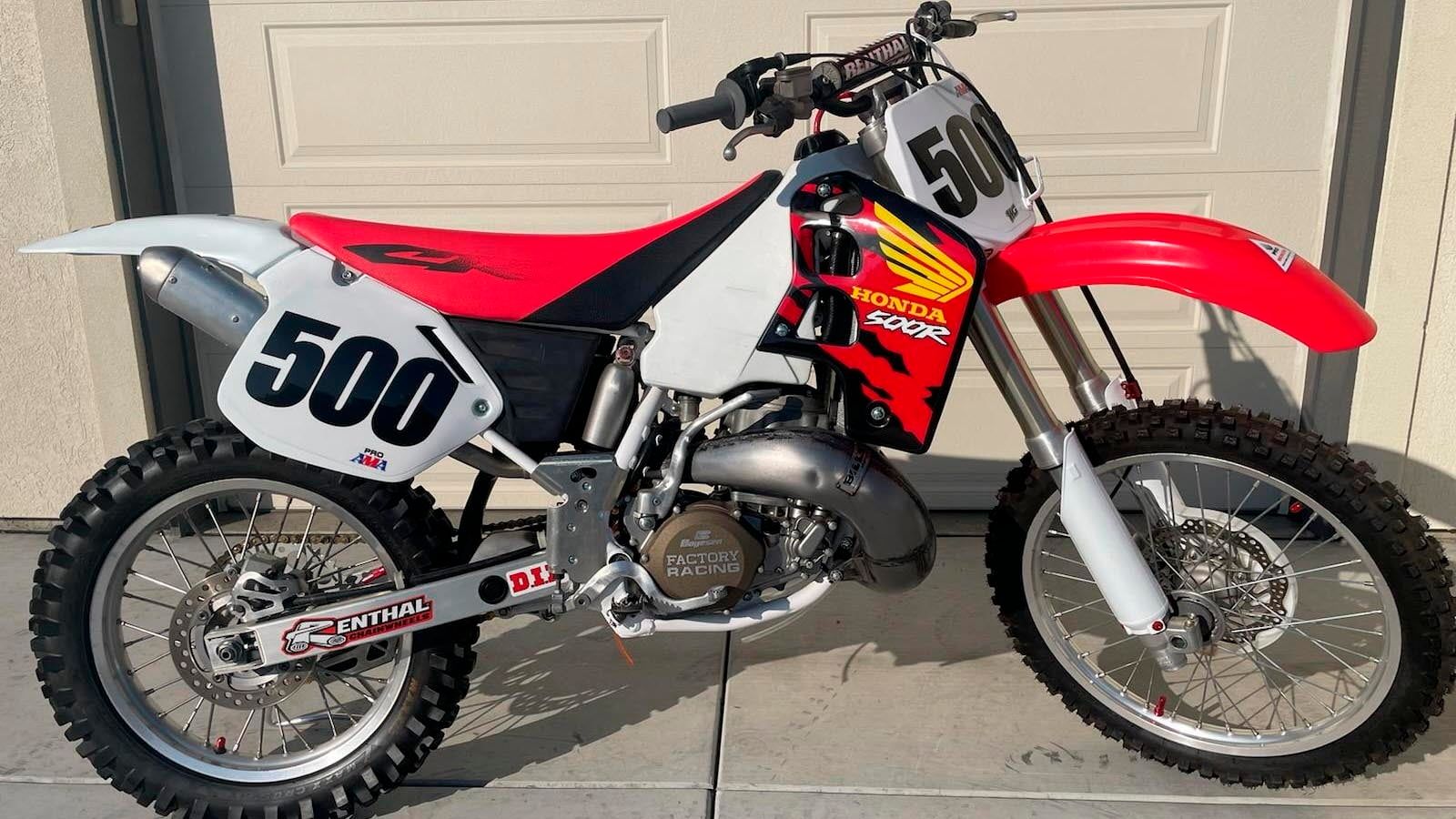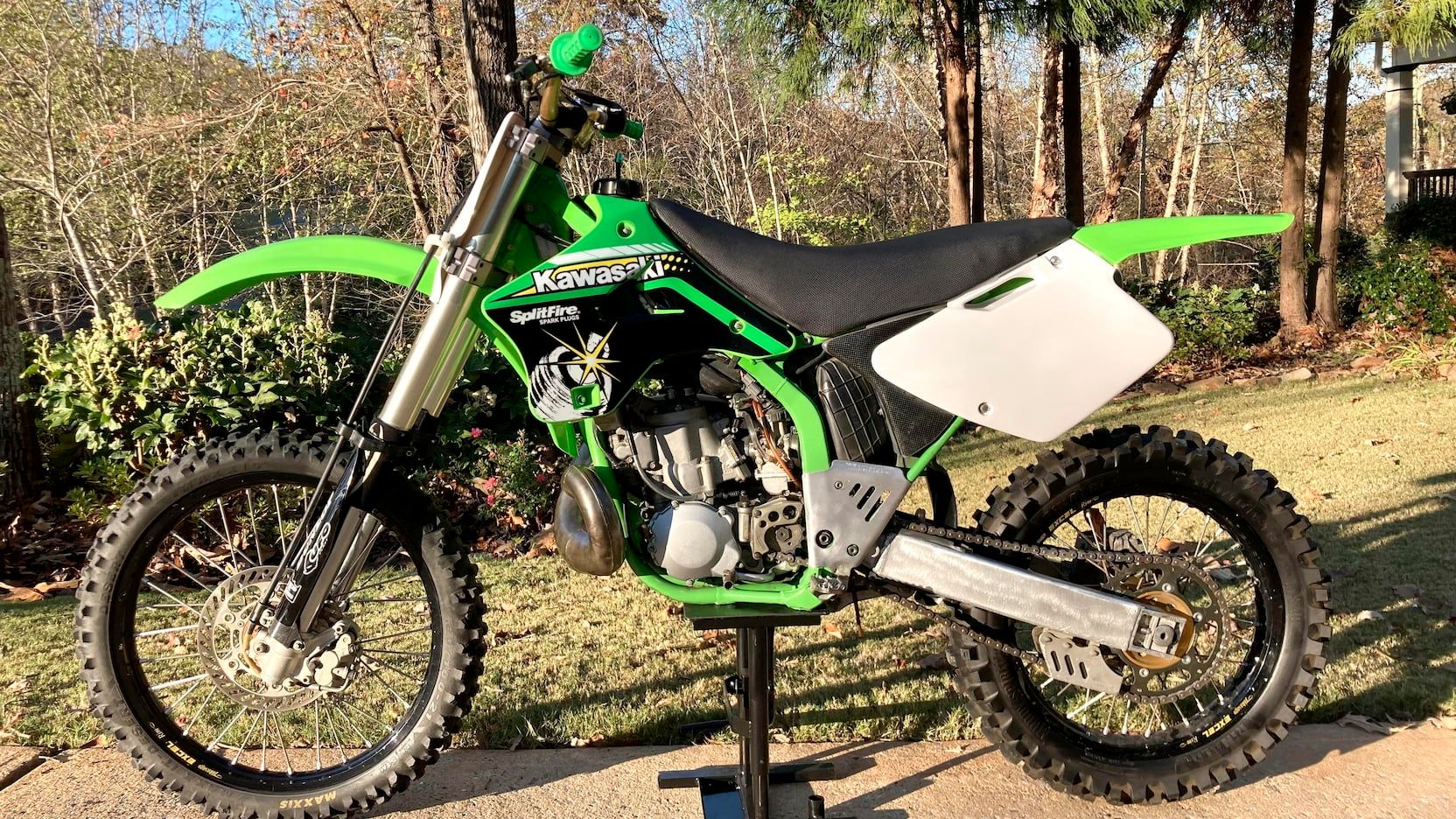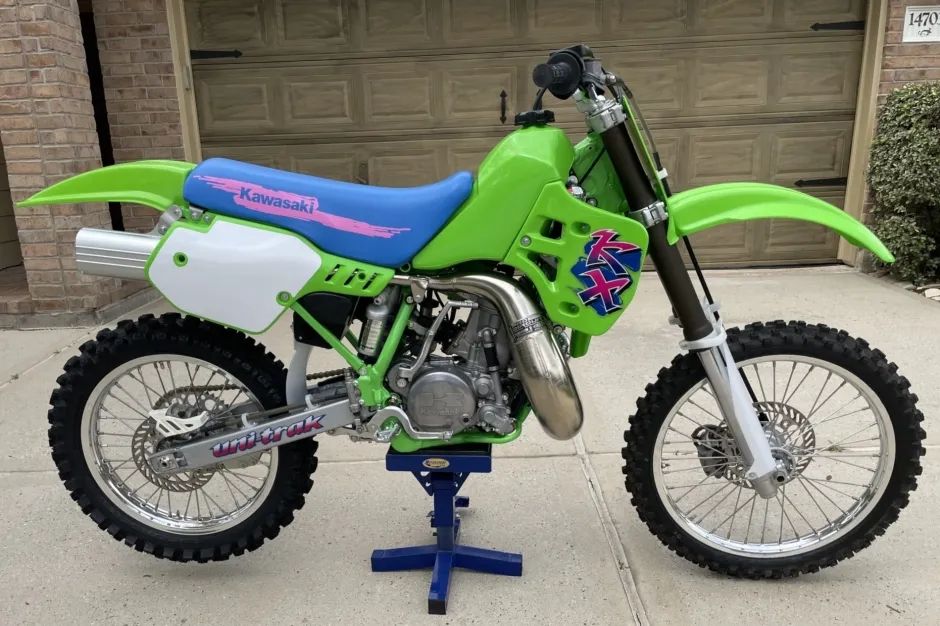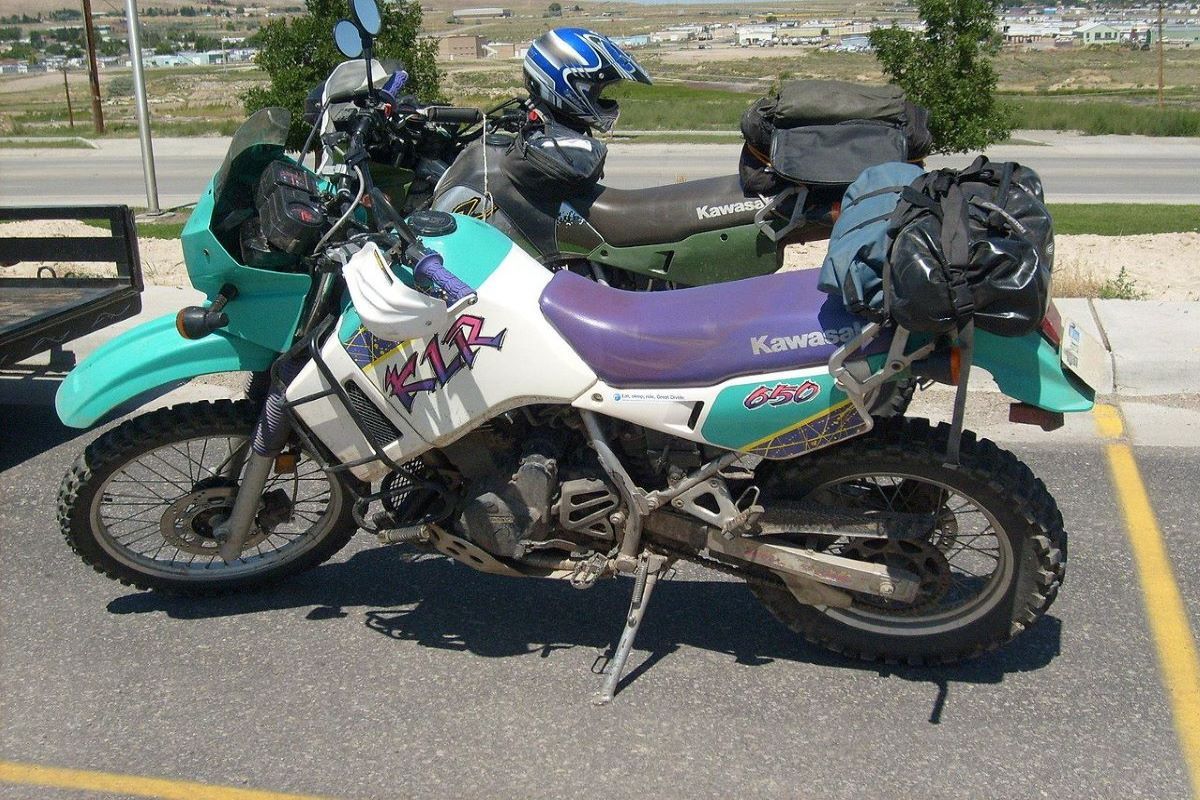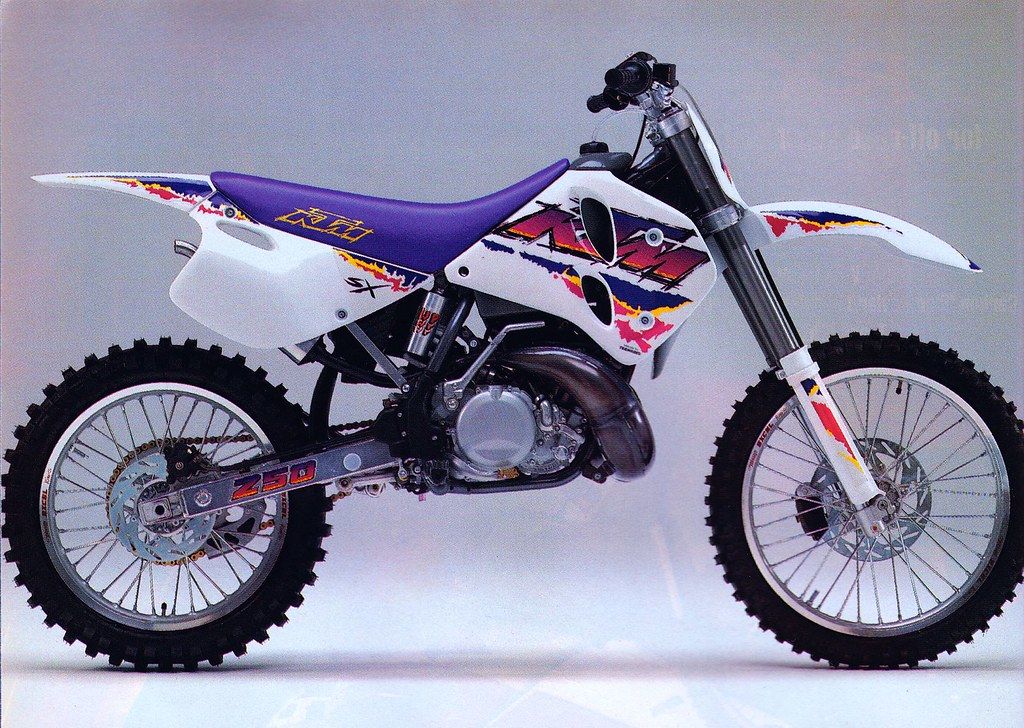Pre-mixed gas, fat pipes, custom finned helmets with lights, all accompanied by a background score of thrash metal, punk or grunge rock - The 90s had a lot going on in the dirt racing scene. It was as cool and exciting as it could get, and do we surely look back at those days to reminisce the heydays of the MX and desert racers. Among the chaos, 2T smoke and dirt clouds - Legends were born, like Travis Pastrana, Jeff Emig and Jeremy McGrath to name a few - and along with them, a few motocrossers and enduros also enjoyed their fair share of glory and heroism. Not just that, but there was also a marked transition from two-strokes to the more modern four-strokes, that paved the way for some of the best current enduro and MX models on sale today. Here are ten bikes of significance that defined this period of off-road greatness.
We used data from CycleWorld.com, and Motorcycle.com to deliver the relevant content in this list.
10 Honda CR500R - 1997
This bike took birth way before the 90s - In 1981 to be specific, and since then, went through quite a number of upgrades and revisions to be the bike that the 90s appreciated. The improvements included a new 5-speed gearbox, a revised head design and liquid cooling. With its rocket of a two-stroke single producing an average of 58 horses throughout its years in production, it was insanely quick and fiercely competitive given its wet weight of just 247 pounds.
9 Yamaha YZ400F - 1998
The YZ400F was created in 1998, a late arrival in the 90s nonetheless - with a sole objective of making meals out of the two-stroke dirt bike competition. Initially when launched, people struggled to take it seriously - But boy was it underestimated. It did what it was supposed to, offering predictable and accurate feedback to the rider, credits due to the engine that loved to rev high as well as chug along at low RPM's, and the handling that assured confidence no matter the terrain or incline. Although the weight was a slight disadvantage, weighing wet at 260-odd pounds, it offered a brilliant and modernistic package that could take on the best of the pack.
8 Kawasaki KX250 - 1998
The KX250 was a strong performer throughout its years in two-stroke format - Starting out in 1987, with successive generations including a few critical updates to the engine and frame, that was revised more comprehensively from 1994 onwards and packed new suspension as well, that could easily outperform the rest of its class particularly in the 1995 season. It was discontinued in 2004 in favor of its four-stroke sibling, however as the years went by, racers started going back to the 2T's considering their simple architecture and easier overall maintenance.
7 Kawasaki KX500 - 1992
The KX500 was designed as an open class racer for competition use since the 80s, but it was the beginning of the 90s that the pinnacle of Kawasaki's efforts took shape with the fourth generation of this machine. Inverted forks, upgraded suspension and a refined engine design helped the KX500 dominate the Desert Nationals from 1992 to 1995 (more on that later). The bike also tasted victory in the MX Nationals, starting in 1989 and then 1990 and 1992, before the series was wrapped up.
6 KTM 380SX - 1999
First things first. Why 380cc? Well, this MX'er was preceded by the 360, which was in turn by the 350, and the 300. This unique displacement gave the bike an edge in terms of feeling and handling like a 250, but delivering on outright power closer to a 500. The 1999 model year of the KTM 380SX was the start to this bike's journey, before being abruptly put down after the year 2000. This bike is a rarity in the MX space, but a noteworthy mention considering how much potential it seemed to promise.
5 Honda XR600R - 1993
Designated for desert racing, the Honda XR600 was an indestructible combo of reliability, go-anywhere capability and enough power to smoke the KX500 to be the new four-stroke king of the desert in the 90s. This enduro was succeeded by the XR650L that came with a liquid-cooled engine in the later years, but the XR600 was primarily known for its brilliant success in partnership with Scott Summers to win five Grand National Cross Country championships, four AMA Hare Scrambles national championships and three first finishes in the ISDE (International Six Days Enduro) series as well.
4 Yamaha WR400F - 1998
The first generation WR400F debuted in 1998, promising another enduro in the relatively new four-stroke class to offer superior reliability and dependability due to its familiar five-valve engine shared with the YZ400F, competent suspension and higher oil capacity. It did what the YZ400F did in the MX world - Prove that four-strokes were the future at the time and enough to win major racing series. The WR400F culminated into the WR450F in the later years, which still continues to be updated and revised marginally till date and is one of the enduro greats.
3 Kawasaki KLR650 - 1995
The KLR650 is still mentioned today in enduro comparisons and reviews - for good reason. Starting off in 1987, the KLR650 was vastly unchanged except small changes to a few parts here and there till 2007, where it received significant updates to the engine (water cooling, revised counterbalancer shaft etc.). It finds great relevance as an off-road as well as an adventure touring bike, due to its raw simplicity, ruggedness and ease of maintenance. The current gen KLR650 comes with fuel injection and ABS as the most major additions to this bike, apart from the cosmetic differences of course. One of the prime examples of "If it ain't broke why fix it?".
2 KTM 250SX - 1994
The 250SX was a great entry-level class motocrosser that outshone its peers regardless of the testing that it underwent with the other six to eight competitor bikes in its class. It was fast, agile, and somehow edgier and instinctive to ride compared to other bikes at the time, setting a great base for future models to come. Many still claim the 250 to be the nicest combination of power and handling for this MX machine.
1 Suzuki RM125 - 1990
During the early 90s, it was Suzuki that was dominating the 125cc GP and MX class with the RM125. Equipped with a blistering liquid-cooled two-stroke engine that put out close to 38 horses, and next to no low-end torque, it was a handful to say the least but equally rewarding when pushed hard. 1990 featured the "Full Floater" RM125 as victorious in the hands of the American Donny Schmit. Following that achievement, Stefan Everts and Pedro Tragter won two additional 125cc world titles in 1991 and 1993, respectively.

